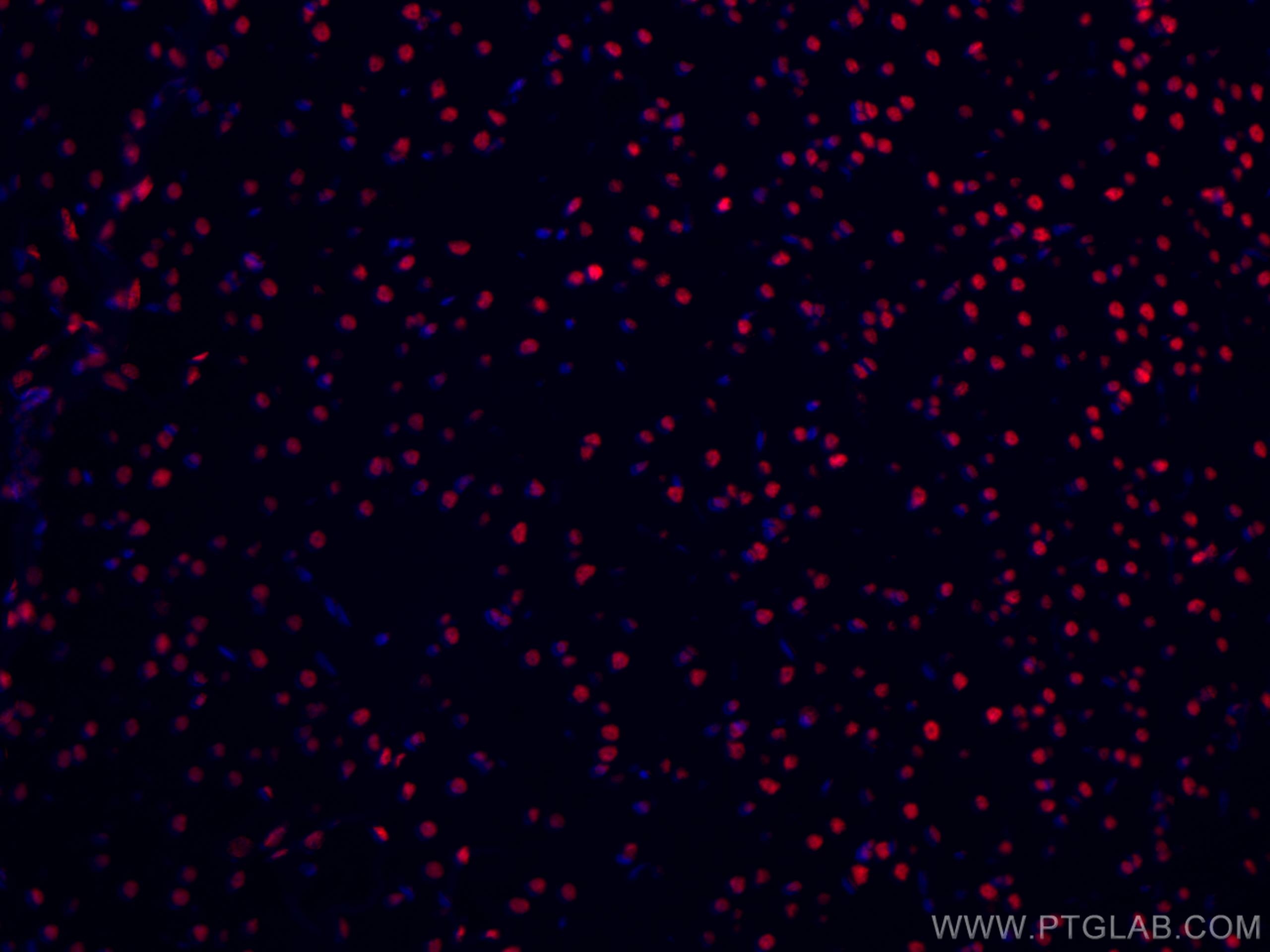验证数据展示
经过测试的应用
| Positive IF-P detected in | rat brain tissue |
推荐稀释比
| 应用 | 推荐稀释比 |
|---|---|
| Immunofluorescence (IF)-P | IF-P : 1:150-1:600 |
| It is recommended that this reagent should be titrated in each testing system to obtain optimal results. | |
| Sample-dependent, Check data in validation data gallery. | |
产品信息
CL594-67345 targets TDP-43 (C-terminal) in IF-P applications and shows reactivity with Human, mouse, rat samples.
| 经测试应用 | IF-P Application Description |
| 经测试反应性 | Human, mouse, rat |
| 免疫原 |
fusion protein 种属同源性预测 |
| 宿主/亚型 | Mouse / IgG2a |
| 抗体类别 | Monoclonal |
| 产品类型 | Antibody |
| 全称 | TAR DNA binding protein |
| 别名 | ALS10, TAR DNA binding protein, TAR DNA binding protein 43, TARDBP, TDP 43, TDP43 |
| 计算分子量 | 43 kDa |
| 观测分子量 | 43-45 kDa |
| GenBank蛋白编号 | NM_007375 |
| 基因名称 | TDP-43 |
| Gene ID (NCBI) | 23435 |
| RRID | AB_2889841 |
| 偶联类型 | CoraLite®594 Fluorescent Dye |
| 最大激发/发射波长 | 588 nm / 604 nm |
| 形式 | Liquid |
| 纯化方式 | Protein A purification |
| UNIPROT ID | Q13148 |
| 储存缓冲液 | PBS with 50% glycerol, 0.05% Proclin300, 0.5% BSA, pH 7.3. |
| 储存条件 | Store at -20°C. Avoid exposure to light. Stable for one year after shipment. Aliquoting is unnecessary for -20oC storage. |
背景介绍
Transactivation response (TAR), DNA-binding protein of 43 kDa (also known as TARDBP or TDP-43), was first isolated as a transcriptional inactivator binding to the TAR DNA element of the HIV-1 virus. Neumann et al. (2006) found that a hyperphosphorylated, ubiquitinated, and cleaved form of TARDBP, known as pathologic TDP-43, is the major component of the tau-negative and ubiquitin-positive inclusions that characterize amyotrophic lateral sclerosis (ALS) and the most common pathological subtype of frontotemporal lobar degeneration (FTLD-U). 67345-1-Ig is a mouse monoclonal antibody raised against the C-terminal region of human TDP-43.
实验方案
| Product Specific Protocols | |
|---|---|
| IF protocol for CL594 TDP-43 (C-terminal) antibody CL594-67345 | Download protocol |
| Standard Protocols | |
|---|---|
| Click here to view our Standard Protocols |
